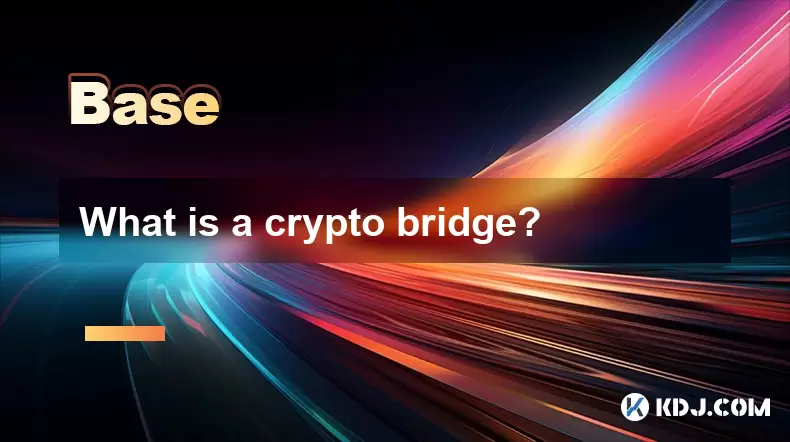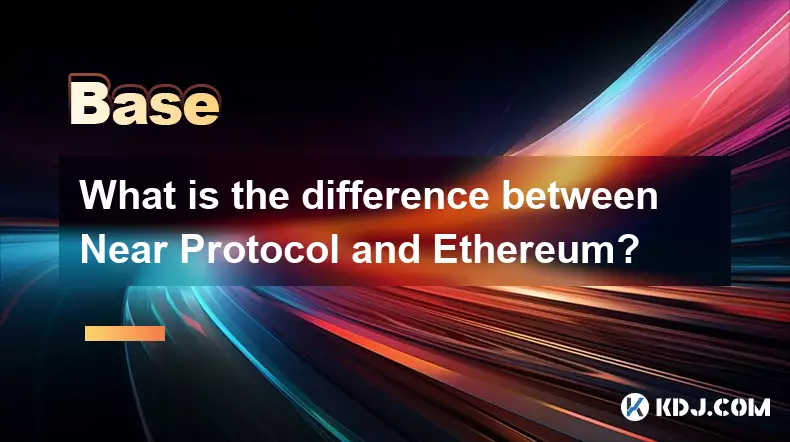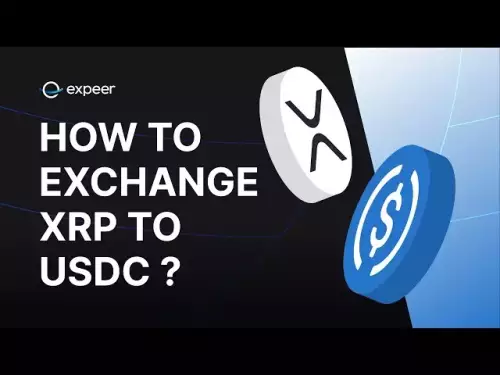-
 bitcoin
bitcoin $112715.707551 USD
-1.71% -
 ethereum
ethereum $4101.475385 USD
-3.01% -
 tether
tether $1.000644 USD
-0.02% -
 bnb
bnb $1207.619465 USD
-6.77% -
 xrp
xrp $2.501451 USD
-3.98% -
 solana
solana $202.947124 USD
-3.32% -
 usd-coin
usd-coin $1.000295 USD
0.04% -
 dogecoin
dogecoin $0.203884 USD
-4.47% -
 tron
tron $0.317154 USD
-1.72% -
 cardano
cardano $0.695009 USD
-4.43% -
 hyperliquid
hyperliquid $38.853961 USD
-8.23% -
 chainlink
chainlink $18.988674 USD
-4.64% -
 ethena-usde
ethena-usde $1.000233 USD
-0.03% -
 stellar
stellar $0.337050 USD
-3.63% -
 bitcoin-cash
bitcoin-cash $536.861728 USD
-1.28%
What is a crypto bridge?
A crypto bridge enables the transfer of assets or data between different blockchains, enhancing interoperability and allowing users to move tokens across networks like Ethereum and Binance Smart Chain.
Jul 04, 2025 at 08:35 am

Understanding the Basics of a Crypto Bridge
A crypto bridge, also known as a blockchain bridge, is a mechanism that allows the transfer of assets or data between two different blockchain networks. These networks often operate on distinct protocols, consensus mechanisms, and smart contract functionalities. The primary purpose of a crypto bridge is to enable interoperability across blockchains, which are otherwise isolated ecosystems.
For instance, if you own Ethereum-based tokens (ERC-20) but want to use them on the Binance Smart Chain for lower transaction fees, a crypto bridge facilitates this process by locking your original tokens and minting equivalent tokens on the target chain.
This cross-chain functionality is essential in a decentralized environment where multiple blockchains coexist.
How Does a Crypto Bridge Work?
Crypto bridges function through a combination of smart contracts and custodial or non-custodial mechanisms. When a user initiates a cross-chain transfer, the bridge locks the original asset on the source chain and releases an equivalent amount on the destination chain. This can be done either via a wrapped token system or a native minting/burning approach.
- Lock-and-Mint Process: The original tokens are locked in a smart contract, and corresponding tokens are minted on the target blockchain.
- Burn-and-Release Process: Tokens on one chain are burned, and previously locked tokens on another chain are released back to the user.
- Custodial Bridges: Require a centralized entity to hold the original assets and issue tokens on the other side.
- Non-Custodial Bridges: Rely on algorithms and smart contracts to automate the process without intermediaries.
Each method has its pros and cons in terms of security, decentralization, and speed.
Types of Crypto Bridges
There are mainly two categories of crypto bridges: trusted bridges and trustless bridges.
- Trusted Bridges: Operate under the control of a central authority or consortium. Users must trust these entities to manage their funds securely. Examples include Binance Bridge and Wrapped Bitcoin (WBTC).
- Trustless Bridges: Function based on mathematical guarantees and code execution. No single party controls the funds. Examples include Chainlink CCIP and Hop Protocol.
Additionally, bridges can be classified as on-chain or off-chain, depending on how they validate transactions and maintain consensus between chains.
Use Cases of Blockchain Bridges
Blockchain bridges serve several practical purposes within the crypto ecosystem:
- Asset Transfer: Allows users to move tokens like ETH, BTC, or stablecoins across different blockchains such as Polygon, Arbitrum, or Avalanche.
- Decentralized Finance (DeFi): Enables liquidity providers to access DeFi protocols on various chains without being restricted to a single network.
- NFT Mobility: Facilitates the movement of NFTs between platforms built on different blockchains, enhancing market reach and accessibility.
- Layer-2 Scaling Solutions: Bridges help users interact with Layer-2 networks (e.g., Optimism, zkSync) by moving assets from Layer-1 (like Ethereum) efficiently.
These use cases demonstrate how crypto bridges enhance utility, reduce costs, and improve user experience across disparate blockchain environments.
Security Considerations and Risks
While crypto bridges offer significant benefits, they also introduce security risks due to their complex architecture and reliance on external validators or oracles.
- Smart Contract Vulnerabilities: Bugs or flaws in the bridge's code can lead to exploits, resulting in fund loss. Several high-profile hacks have targeted bridges like Wormhole and Ronin Network.
- Centralization Risks: Trusted bridges may suffer from mismanagement or collusion among validators, compromising decentralization principles.
- Oracle Manipulation: Some bridges depend on off-chain data feeds, making them susceptible to oracle manipulation or downtime.
- Reentrancy Attacks: Malicious actors may exploit reentrancy vulnerabilities in the bridge’s smart contracts to drain funds.
Users should conduct thorough research before using any bridge and consider factors like audit history, community reputation, and transparency.
Steps to Use a Crypto Bridge Safely
Using a crypto bridge involves several steps that require careful execution to avoid errors or losses.
- Choose a Reputable Bridge: Research and select a well-audited, community-trusted platform like Multichain, cBridge, or Across.
- Connect Your Wallet: Use wallets like MetaMask or Trust Wallet and ensure they support both the source and target chains.
- Select the Asset and Target Chain: Choose the token you wish to transfer and specify the destination blockchain.
- Approve the Transaction: Confirm the transaction in your wallet and pay the required gas fees on the source chain.
- Wait for Confirmation: Depending on the bridge, it may take a few minutes to hours for the assets to appear on the destination chain.
- Verify the Balance: Check your wallet on the new chain to ensure the correct amount was received.
Always double-check addresses and network settings before proceeding with any cross-chain transaction.
Frequently Asked Questions (FAQ)
Q: Can I reverse a cross-chain transfer once initiated?Once a transfer is confirmed on the source chain, it cannot be reversed unless the bridge supports a rollback mechanism, which is rare.
Q: Are all crypto bridges compatible with every blockchain?No, each bridge typically supports specific chains. You must verify whether the bridge connects your source and target blockchains.
Q: Do I need to pay fees on both chains when using a bridge?Yes, users usually pay gas fees on the source chain and sometimes additional fees on the destination chain depending on the bridge design.
Q: How do I know if a bridge is secure?Look for bridges that have undergone third-party audits, have open-source code, and maintain active community discussions or bug bounty programs.
Disclaimer:info@kdj.com
The information provided is not trading advice. kdj.com does not assume any responsibility for any investments made based on the information provided in this article. Cryptocurrencies are highly volatile and it is highly recommended that you invest with caution after thorough research!
If you believe that the content used on this website infringes your copyright, please contact us immediately (info@kdj.com) and we will delete it promptly.
- Tokenization Takes Center Stage: SEC-Registered Stock Tokens Reshape Finance
- 2025-10-15 22:25:13
- Bitcoin Seized, Transferred: A New York Minute on Crypto's Wild Ride
- 2025-10-15 22:25:13
- Milk & Mocha's $HUGS: Can This Crypto Presale Deliver a 100x Portfolio?
- 2025-10-15 22:30:01
- Memecoins Grow Up: $HUGS Presale Offers Real Utility
- 2025-10-15 22:45:13
- HUGS Launch, Crypto Bull Run, and a Perfect Storm Brewing?
- 2025-10-15 22:45:13
- Zero Knowledge Proof, Whitelists, and the Future of Blockchain Privacy
- 2025-10-15 22:30:01
Related knowledge

How do decentralized identity (DID) solutions work?
Oct 14,2025 at 11:36pm
Understanding Decentralized Identity in the Blockchain Ecosystem1. Decentralized identity (DID) solutions are built on blockchain networks, allowing i...

What is the difference between Near Protocol and Ethereum?
Oct 15,2025 at 08:01am
Near Protocol and Ethereum: Core Architectural Differences1. Near Protocol operates on a sharded blockchain architecture known as Nightshade, which al...

What does it mean for code to be "open source" in crypto?
Oct 12,2025 at 01:54pm
Understanding Open Source in the Cryptocurrency Ecosystem1. In the context of cryptocurrency, open source refers to software whose code is publicly ac...

What is the purpose of a "testnet"?
Oct 12,2025 at 09:01am
Understanding the Role of Testnets in Blockchain Development1. A testnet serves as a parallel version of a blockchain network, designed specifically f...

How to avoid phishing scams in crypto?
Oct 13,2025 at 06:18pm
Understanding Common Crypto Phishing Tactics1. Cybercriminals frequently use fake websites that mirror legitimate crypto exchanges or wallet platforms...

What is the difference between single-collateral and multi-collateral Dai?
Oct 12,2025 at 05:18pm
Understanding Single-Collateral Dai1. Single-Collateral Dai (SCD) was the original version of the Dai stablecoin launched by MakerDAO in 2017. It allo...

How do decentralized identity (DID) solutions work?
Oct 14,2025 at 11:36pm
Understanding Decentralized Identity in the Blockchain Ecosystem1. Decentralized identity (DID) solutions are built on blockchain networks, allowing i...

What is the difference between Near Protocol and Ethereum?
Oct 15,2025 at 08:01am
Near Protocol and Ethereum: Core Architectural Differences1. Near Protocol operates on a sharded blockchain architecture known as Nightshade, which al...

What does it mean for code to be "open source" in crypto?
Oct 12,2025 at 01:54pm
Understanding Open Source in the Cryptocurrency Ecosystem1. In the context of cryptocurrency, open source refers to software whose code is publicly ac...

What is the purpose of a "testnet"?
Oct 12,2025 at 09:01am
Understanding the Role of Testnets in Blockchain Development1. A testnet serves as a parallel version of a blockchain network, designed specifically f...

How to avoid phishing scams in crypto?
Oct 13,2025 at 06:18pm
Understanding Common Crypto Phishing Tactics1. Cybercriminals frequently use fake websites that mirror legitimate crypto exchanges or wallet platforms...

What is the difference between single-collateral and multi-collateral Dai?
Oct 12,2025 at 05:18pm
Understanding Single-Collateral Dai1. Single-Collateral Dai (SCD) was the original version of the Dai stablecoin launched by MakerDAO in 2017. It allo...
See all articles










































































